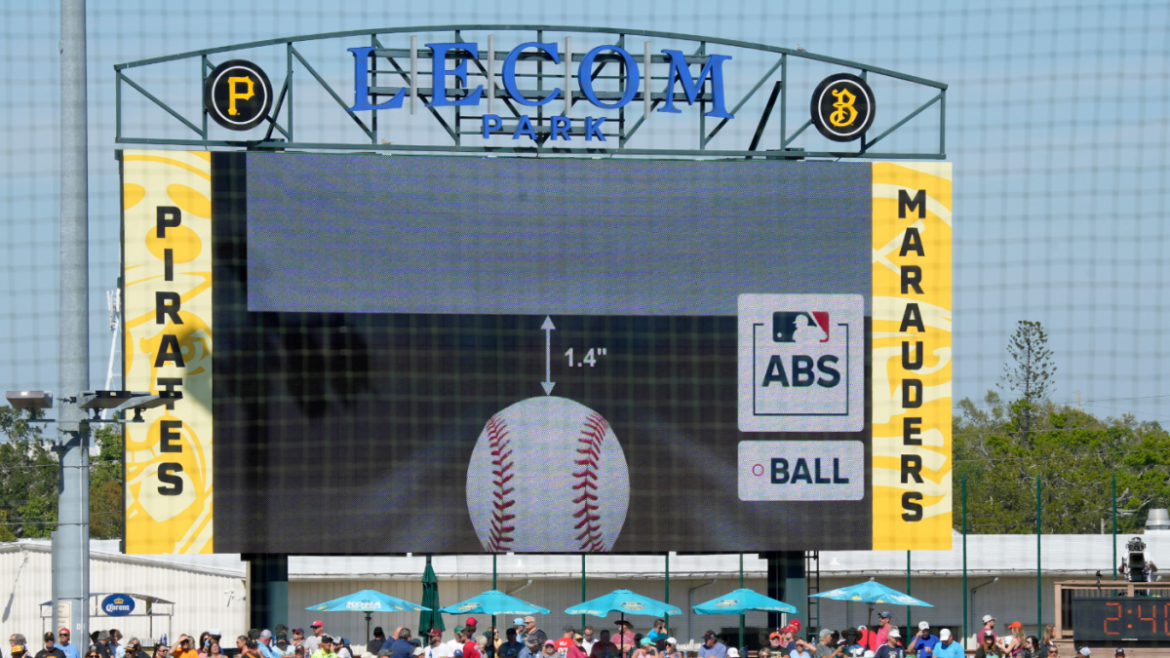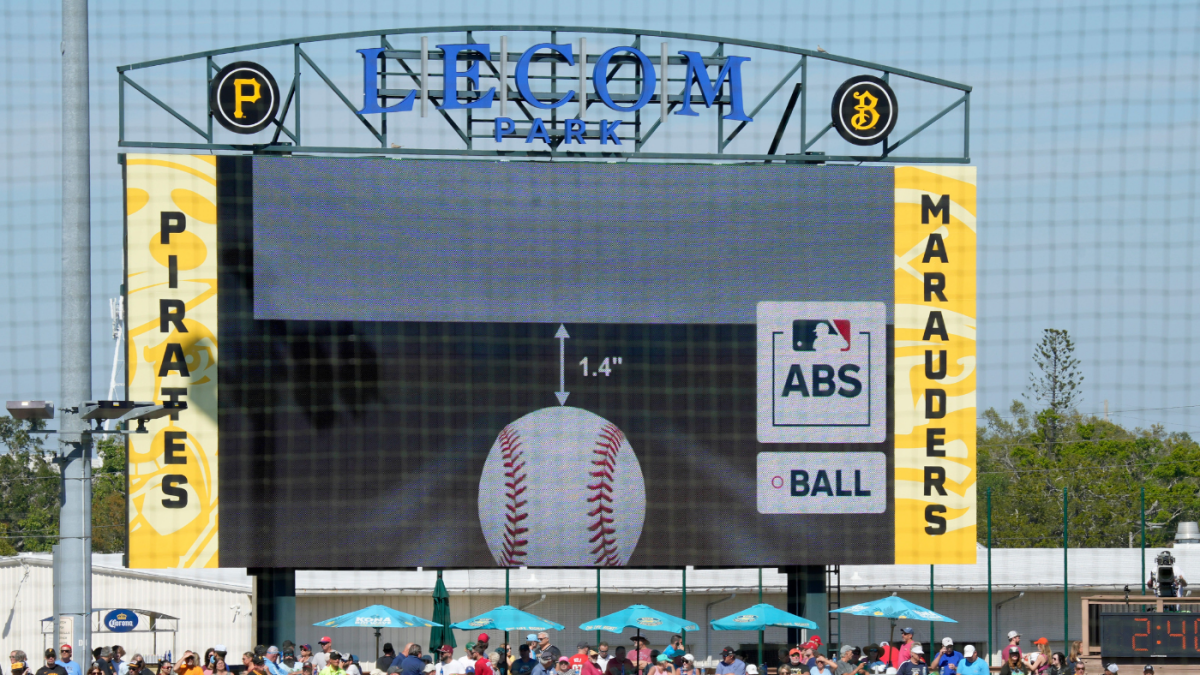Emerging Shift in Major League Baseball: Automated Ball-Strike Challenge System
Major League Baseball (MLB) is on the verge of a technological revolution that could redefine how fundamental aspects of the game—specifically, ball and strike calls—are managed. The Automated Ball-Strike (ABS) Challenge System, a camera- and computer-driven technology designed to assist and potentially challenge human umpire calls, is poised for a phased introduction culminating in potential full adoption during the 2026 MLB season. This report delves into the genesis, development, testing, reception, and future prospects of the ABS system, providing a comprehensive understanding of its implications for the sport.
—
The Need for Change: Why Automated Ball-Strike Calls?
Accurate ball and strike calls have long been a contentious element in baseball, with umpires’ judgments sometimes sparking controversy among players, managers, and fans alike. Across the 2025 season and prior, numerous calls by umpires in Major League Baseball games elicited dissatisfaction, sparking conversations about whether technology could improve fairness and consistency without compromising the human element intrinsic to the sport.
This ongoing debate, paired with advancements in tracking and camera technology, has created fertile ground for experiments with automated systems. The MLB’s interest in the ABS system reflects a broader movement toward leveraging technology not as a full replacement for officials but as a powerful assistive tool.
—
Development and Testing: The Path to Adoption
Spring Training Trials
MLB initiated ABS testing during spring training games, where players and managers were given the ability to challenge ball and strike calls using the system. The technology relies on multiple high-speed cameras and computer algorithms to analyze pitch trajectories and provide real-time evaluations.
One conspicuous example from the trials involved jazz Chisholm Jr. of the New York Yankees, whose confident use of the system during a spring training matchup against the Boston Red Sox demonstrated player acceptance of ABS as a legitimate challenge mechanism. The experimental phase has yielded promising results, with teams succeeding in over 52% of their challenges using the system, underscoring its accuracy and potential reliability.
Triple-A Implementation as a Crucial Stepping Stone
The 2025 season has seen the ABS challenge system fully in place at the Triple-A level, a vital tier just below MLB, which serves as a proving ground for rule changes and new technologies before major league implementation.
Beginning June 25, all Triple-A games incorporated the ABS challenge system, allowing the league to collect extensive data on its operational strengths and weaknesses. This trial zone aims to provide insightful feedback on the pros and cons of reliance on such technology, including the impact on game flow, umpire roles, and player behavior.
—
MLB Commissioner Rob Manfred’s Vision and Proposals
Commissioner Rob Manfred has articulated clear support for the ABS challenge system, framing it as the “next big change” brewing in baseball’s storied tradition. At recent owners meetings and press conferences, Manfred reaffirmed plans to formally propose the system’s introduction for the 2026 MLB season.
While full robotic umpiring, where human umpires are entirely replaced, has been shelved in favor of a hybrid approach, the ABS challenge system offers a middle ground: maintaining on-field human officials while empowering teams with a technologically assisted review process for ball and strike calls.
Manfred’s intent to roll out ABS first as a challenge system in the majors, coupled with data collected from Triple-A and spring training tests, reflects a cautious but optimistic approach balancing technological innovation with the sport’s human dimension. He acknowledges that ABS will only be implemented after rigorous testing and gaining support from key stakeholders, including the MLB Players Association (MLBPA).
—
The Proposed System: How It Works on the Field
The ABS challenge system integrates automated tracking technology to monitor the exact location of the pitch relative to the strike zone, defined by the batter’s stance. When umpires call balls or strikes, teams will have the option to challenge those calls, triggering a review where the automated system provides its evaluation.
Key features and anticipated benefits include:
– Increased Fairness and Accuracy: Using high-precision technology to reduce human error.
– Maintained Umpire Authority: Umpires continue to make calls on the field, preserving traditional roles and game dynamics.
– Strategic Challenges: Teams utilize challenges tactically, adding a layer of strategy.
– Transparency: Decisions aided by clear, data-driven information can improve fan trust and understanding.
The system also aims to minimize delays common in other sports’ video reviews by streamlining the technological processes and challenge frameworks.
—
Reception and Anticipated Challenges
The baseball community, from players and managers to fans, holds varied perspectives on ABS. Early trials indicate increasing acceptance, especially among players who recognize the benefits in protecting them from potentially game-changing erroneous calls.
Nevertheless, concerns linger:
– Impact on Umpires: Some traditionalists worry about diminishing umpire authority and potential job insecurity.
– Game Pace: Managing the challenge workflow to avoid excessive game interruptions remains vital.
– League-Wide Consistency: Ensuring all stadiums have the necessary technological infrastructure.
– Defining the Strike Zone: Potential adjustments to strike zone definitions concurrent with ABS deployment may complicate the transition.
Despite these hurdles, the MLB appears committed to onboarding the technology responsibly and incrementally.
—
Looking Ahead: The Future of MLB and Technology
With a plan to propose ABS officially for the 2026 season and extensive precedent testing in spring training and Triple-A, MLB is setting the stage for a significant shift in how America’s pastime integrates technology. This evolution could serve as a blueprint for other professional sports seeking to balance human judgment with technological precision.
Continued dialogue among league officials, players, umpires, and fans will be critical in fine-tuning the system and managing expectations. The phased implementation strategy underscores MLB’s intent to preserve the essence of the sport while embracing innovation.
—
Conclusion: Embracing Innovation While Preserving Tradition
The Automated Ball-Strike Challenge System represents a bold but measured step forward for Major League Baseball. Through rigorous testing, careful planning, and stakeholder engagement, MLB is navigating the intersection of tradition and technology. The anticipated 2026 proposal aims to usher in an era where fairness, accuracy, and entertainment quality thrive together without sidelining the human element that makes baseball cherished.
As the game stands at this crossroads, the ABS system could exemplify how sports evolve—not by erasing their past but by thoughtfully integrating the tools of the future. Fans, players, and officials alike await with curiosity and cautious optimism the day when the “robot umps” become part of baseball’s rich tapestry.





